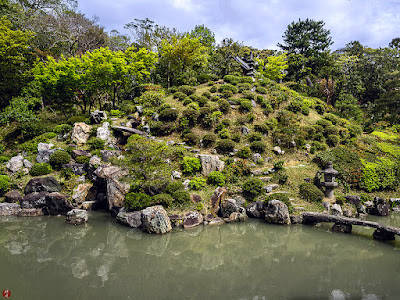The first time in half a year, I visited Kyoto just after the lively Hanami (cherry‐blossom viewing) season.
My photographic notes about the four seasons in Kamakura or the gardens of Zen
June 18, 2024
Pond garden: Chishaku-in Temple (Kyoto)
The first time in half a year, I visited Kyoto just after the lively Hanami (cherry‐blossom viewing) season.
Pond garden: Chishaku-in Temple (Kyoto)
The droplets of water falling intermittently from the gaps in the stonework strike the tranquil surface of the pond water to continue creating faint sounds and ripples.
Pond garden: Chishaku-in Temple (Kyoto)
Higashiyama of Kyoto is famous for the beauty of the Mid-autumn Moon. When the autumnal equinox approaches, the bright full moon rises high above this pond garden and reflect its serene moonlight on the still surface of the water.
Pond garden: Sanjusangen-do Temple (Kyoto)
The golden yellow flowers of Yamabuki (Japanese rose) are quietly reflecting in the dark green pond that spreads out in front of the fresh vermilion cloister.
The pale pink blossoms of the weeping cherry are subtly swaying in the mild breeze as if to try to gently touch the stone arrangement which may symbolize the classic Shaka triad (a group of 3 Buddhist images composed of Shaka Nyorai flanked with 2 boddhisatvas).
What characterizes this graceful garden is thought to be the well-selected garden-rocks arranged artfully around the pond.
The garden, which has been recently restored, is based on the classical landscape gardening design, while at the same time it skillfully incorporate a certain modern expression that suggests the aesthetic sense common with contemporary sculptures.
Yae-zakura flowers: Sanjusangen-do Temple (Kyoto)
Chokusimon-gate: Ninnaji Temple (Kyoto)
I visited Ninna-ji Temple to enjoy the Omuro-zakura cherry blossoms for the first time in a while year.
North garden: Ninnaji Temple (Kyoto)
The Ninna-ji Imperial Palace Garden is the garden originally created in the mid-Edo period and renovated by "Ueji" Ogawa Jihei VII (1860-1933) during the reconstruction of the Shoin and Shinden (the emperor's former residence and the head temple of the Shingon sect of Buddhism).


















